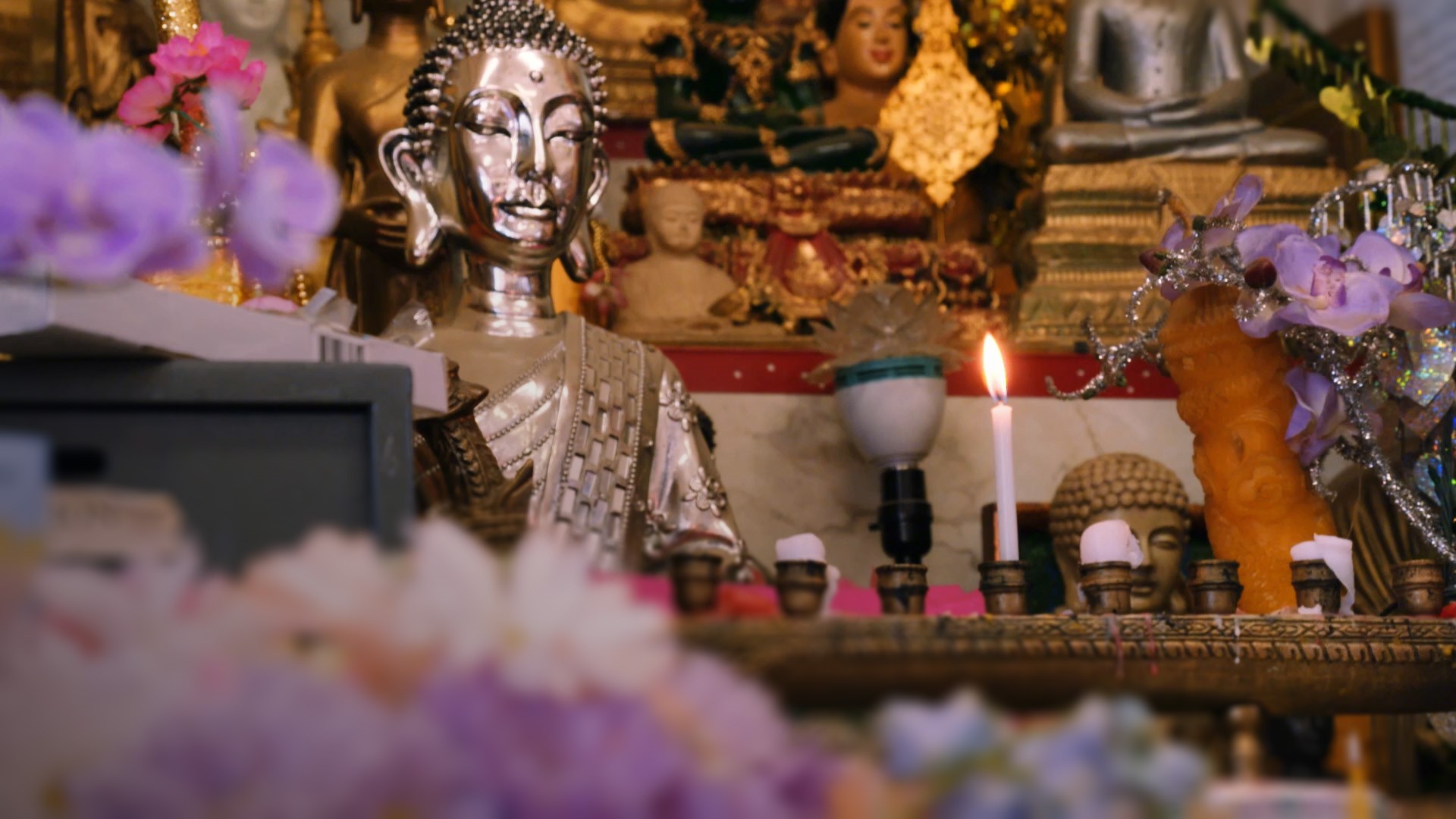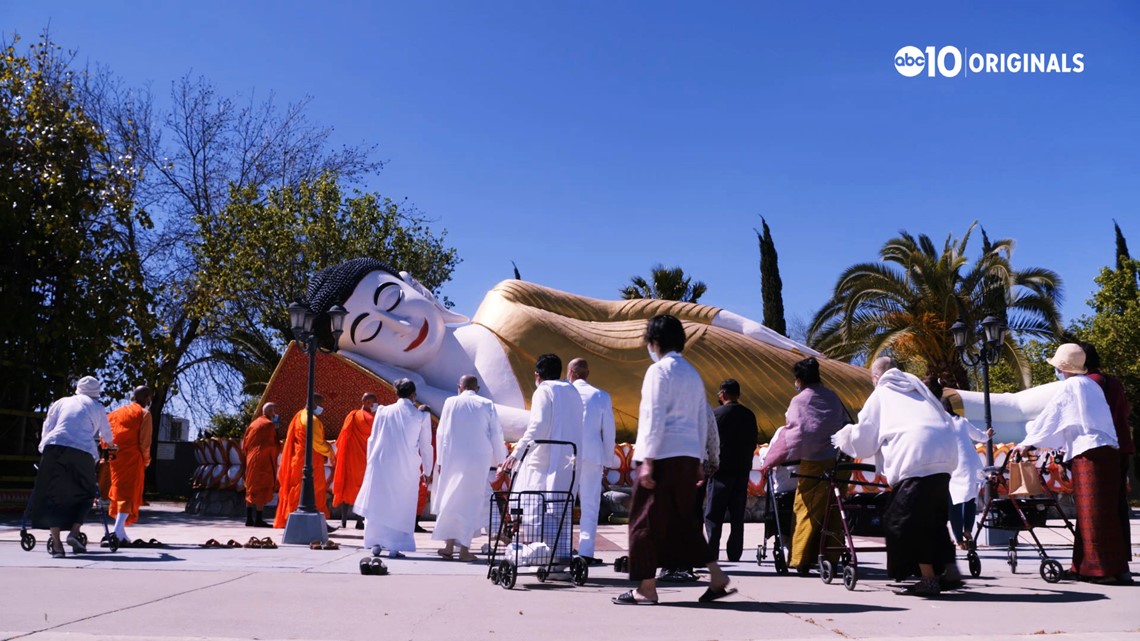The history of Cambodians in Stockton and the organization that has helped thousands of refugees
Stockton is home to one of the largest populations of Cambodian Americans and many have had a hard time speaking out because of the hardships they faced.
ABC10 / Rachel Boyoung Kim

Part One Coming to Stockton
Stockton is home to one of the largest populations of Cambodian Americans in the U.S., but many of their stories have not been told.
Many have had a hard time speaking out because of the hardships and trauma they faced on their journey to the U.S.
“My son said, 'Mom, write your story,' and I said, 'I can’t, Son, because when I start writing I have nightmares at night and I cry,” Sovanna Koeurt, a Stockton resident and refugee, said. “It’s too painful so I don’t talk about it.”
As a refugee, she came to Stockton in 1984 because of the large Cambodians community, also known as Khmer.
In 1960, the Communist Party of Kampuchea, popularly known as Khmer Rouge, was formed. By the early 1970s, the Khmer Rouge was able to take control of large parts of Cambodia. In the eyes of the Khmer Rouge anyone who educated was a potential threat, labeled as an enemy and killed.
“My family, we have 100 people,” Koeurt said. “Thirty three of them die because my family came from educated family. My uncle was professor. My aunt. They killed both of them.”
Koeurt hid the fact she was going to college, and to survive, she was forced to marry her husband at 20 years old.
“I almost killed but because I fought to marry my husband who is low level,” Koeurt said. “He like poor, so they put him in high. Everyone poor, they promote them. They’re not educated, they promote them that’s why a lot of people killed.”
While pregnant, Koeurt and her family crossed the border to Thailand by trading gold for a guide to help them escape.
“We run and walk, run and walk,” Koeurt said. “We just trust the guy that guides us.”
By the early 1980s, the U.S. put resources into a refugee resettlement program that brought people like Koeurt and her family from Thailand to the United States. That program identified Stockton as one of several cities where a large Southeast Asian community would be able to settle successfully.
“Some of that happened to be somewhat racist in modern reflection,” Phillip Merlo, executive director of San Joaquin County Historical Museum, said. “There was the reasoning that because a lot of the refugees were not well-educated, Stockton having a large working-class agricultural workforce would be a good place for them to come to.”
Koeurt said when a lot of the refugees came to the U.S., they couldn’t speak English, and some could barely read or write their own language. When many Khmer arrived in Stockton, they lived in the Park Village Apartments. She said the buildings and neighborhood were dangerous.
“They came here and thought it was safe for the kids and brought them because they had the expectation that they are going to be safe and they can have a new life and new home and have education for the kids,” Koeurt said.
The apartments fell into disrepair. The city planned to condemn the complex, but Koeurt became the voice to advocate for better living conditions.
“At the court, I speak broken English, but I don’t care as long as the word I say... the message that goes to that person,” Koeurt said.
After the apartment complex went into foreclosure, Koeurt, along with 35 other refugee families, were able to purchase it from Housing and Urban Development for $1 in 1993 and learned how to fix it up.
However, not only were the refugees still processing the trauma of leaving the Khmer Rouge, they were impacted by another tragedy in Stockton, the Cleveland School shooting.
“In 1989, unfortunately, a White supremacist who harbored a lot of ill will and resentment towards Asian American communities and diasporic communities, drove past Cleveland school and opened fire and it's really one of the first major mass school shootings in the United States history,” Merlo said.
Five students between the ages of six and nine were killed. Four were Khmer.
This was the tipping point for Khmer in Stockton. Thirty five refugee families, including Koeurt, came together to start Asian Pacific Self-Development and Residential Association [APSARA] to help people facing economic hardships, trauma, and even offer programs for adults and kids.
APSARA has expanded in 30 years and offers educational and health classes as well as teen and senior programs. They serve 2,500 people just in the Stockton area. In 2022, Stockton has one of the largest populations of Khmer in the country, but their stories remain untold.
“I say when you lost one person live here you lost one story,” Koeurt said. “Each individual has their own story.”
Now the younger generations are striving for a brighter future. Some are entrepreneurs, educators, and lifelong advocates. They share a commitment to one another, and a place that gave them and their families a second chance.
Part Two Preserving Their Heritage
Stockton does not have a Cambodia Town like Long Beach does, but there are businesses and spots that help preserve Cambodian American culture and history.
Wat Dhammararam Buddhist Temple is one of those places.
In 1997, Venerable Kong Tith arrived in Stockton from Cambodia to design and build Buddha statues that can be see around the grounds of the temple. It’s all paid for through donations.
“For me, this place is the seat of the Cambodian community in Stockton,” Sophaline Mao, who grew up in Stockton, said. “My family came here in 1985 and from that point on, I remember coming here as a little girl.”
Mao and her family spent most of their time at the temple. She volunteered there and witnessed the large new years' celebrations every year that would attract thousands of people.
The temple is where many celebrate, pray, and even grieve.
“There is a sense of togetherness and community and you come here when you’re suffering and you come here when you’re happy,” Mao said.


Throughout Stockton, you can see the impact of Cambodians, who also are known as Khmer.
Elissa Sok came to Stockton at four years old. At her restaurant, Elissa’s Kitchen, she tries to honor her roots through food.
“Most of my food is influenced by my mom and my grandma, and the elders I grew up with,” Sok said. "Cambodian food and culture changed a lot due to the war so a lot of main dishes disappear and are gone with the older generation that's passed away, and us newer generation try to bring back the food and the flavor of it."
Sok said when she was a child, her parents didn’t celebrate holidays or even birthdays.
"We didn't have much money growing up,” Sok said. "I remember the first time we celebrated a birthday. It was my sister's birthday where my grandma and I went to the Dollar Tree store and bought a cake mix where we baked a cake ourselves. It's a bit touchy now. I'm a parent so my kids have everything. We celebrate birthdays, Christmas, Thanksgiving, every holiday because growing up I didn't have that."
She says looking back, she feels proud about their history and the sacrifices she and her family have made.
“If you know Cambodian history about the genocide, most of our educators were executed because of their education, and that's why it's hard for us to strive here in the United States because most of us here were farmers,” Sok said. “My parents were farmers. They don't have a high education. Growing up to try to be successful, there was a very small chance."
Many Khmer start a business as an opportunity. Chandra Som owns two businesses, a salon and a donut shop. She’s been in Stockton for 40 years.
"We have a lot of Cambodian here in Stockton, and everyone close and everybody know everybody," Som said.
Stockton has one of the largest populations of Khmer in the country.
In the 1980s, the U.S. put resources into a refugee resettlement program and identified Stockton as one of the cities that a large Southeast Asian community would be able to settle successfully.
Over the years, Khmer-owned businesses have helped residents bring a piece of Cambodia to Stockton.
"It's so critical because the next generation of Cambodian Americans, not just in Stockton but just any city, they can come back and know this was built by the community for them to kind of pass down through the generations,” Mao said. “I think the supermarkets, the restaurants, the jewelry shops--I mean you look at these small business owners. This is literally the blanket of our community."
Even though some Khmer have left Stockton for other opportunities, like Mao, they still come back to Stockton often because it’s home.
“I'm very inspired by just the elders that we have who paved the way, because if they didn't build the temple or they didn't build the small businesses here, we wouldn't have anything,” Mao said. “I feel like right now it’s up to my generation. I feel that the Cambodian American community in Stockton definitely has a strong presence here and we're going to continue to grow that and maintain it for the future generations."
MORE FROM STOCKTON | Little Manila: A look into the rich history of Filipino Americans in Stockton, California
